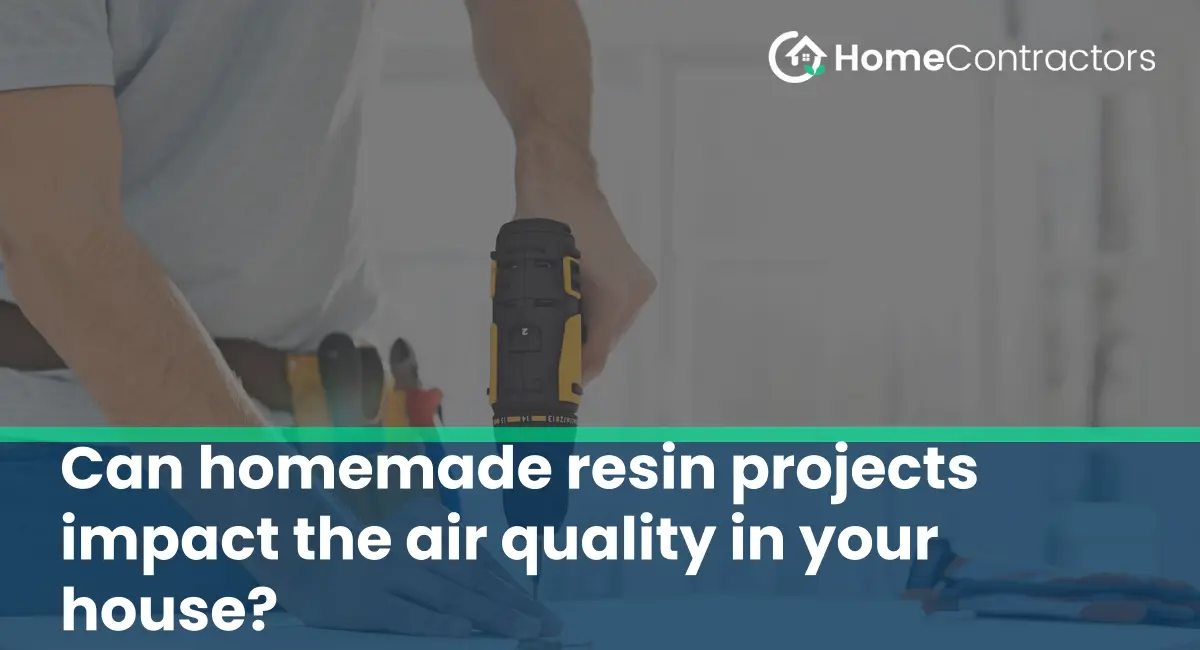Homemade resin projects have been gaining popularity in recent years, with many DIY enthusiasts experimenting with this versatile material to create various crafts and art pieces. However, one of the often-overlooked aspects of working with resin is the potential impact on indoor air quality. While resin is generally safe to use, certain precautions should be taken to minimize any negative effects on the air we breathe. This article explores the potential air quality implications of homemade resin projects and provides guidance on how to maintain a healthy living environment during resin crafting.
Understanding Resin and Airborne Chemicals:
Resin is a synthetic material obtained by mixing liquid components, usually a resin and a hardener, to form a solid polymer. Commonly used in coatings, adhesives, and crafts, resin contains chemicals that release volatile organic compounds (VOCs) into the air during curing. These VOCs can contribute to indoor air pollution and may cause respiratory irritation, allergies, or other health issues, particularly in individuals with sensitivities.
Ventilation and Workspace Preparations:
Proper ventilation is crucial when engaging in resin projects to minimize the concentration of airborne chemicals. When working with resin indoors, follow these guidelines:
- Choose a well-ventilated space: Opt for a room with windows or set up your workstation near a functioning ventilation system, such as an exhaust hood or a fan pointed towards an open window. Adequate air circulation will help dissipate the resin fumes effectively.
- Create a dedicated workspace: Designate a specific area solely for your resin crafts to avoid contaminating other parts of your house. Cover surrounding surfaces with plastic sheets or newspapers to protect them from resin spills and make cleanup easier.
Personal Protective Equipment (PPE):
Wearing appropriate personal protective equipment while working with resin is essential, as it can help prevent inhalation and skin contact with potentially harmful chemicals:
- Respiratory protection: Utilize a fit-tested respirator equipped with organic vapor cartridges to filter out resin fumes. N95 masks can also provide some level of protection against VOC inhalation. Choose a mask suitable for your specific resin’s chemical composition.
- Eye and skin protection: Resin can irritate the eyes and cause skin sensitivities. Wear safety glasses or goggles and nitrile gloves to shield yourself from direct contact with the resin and its derivatives.
Curing and Post-Curing Considerations:
Proper curing and post-curing techniques not only ensure the longevity and quality of your resin projects but also minimize the release of VOCs into the air:
- Follow manufacturer’s instructions: Different types of resin have specific curing requirements. Adhere to the recommended curing time, temperature, and humidity as stated by the manufacturer to allow the resin to fully cure without unnecessary exposure to hazardous fumes.
- Enclose resin curing area: Consider using a curing tent or covering your curing projects with boxes during the initial curing stages. This helps contain the fumes and prevents them from spreading throughout your home.
- Outdoor post-curing: After the initial curing, if weather permits, move your finished resin items outdoors to undergo post-curing. This further reduces the amount of VOCs released indoors.
Regular Cleaning and Maintenance:
Maintaining a clean and well-maintained workspace is crucial for ensuring a healthy indoor environment:
- Dispose of waste properly: Dispose of excess resin, mixing containers, and used brushes in accordance with local regulations. Seal them in airtight bags to prevent additional fuming.
- Regular cleaning: Wipe down surfaces and your workspace with a damp cloth to remove any residual resin or dust. Vacuuming with a HEPA filter can also help eliminate any airborne particles.
While homemade resin projects can be an enjoyable and creative endeavor, it’s important to be aware of their potential impact on indoor air quality. By following proper precautions, such as working in well-ventilated areas, using personal protective equipment, and implementing appropriate curing and post-curing techniques, you can minimize any negative effects on your living environment. By taking these steps, you can continue indulging in resin crafts while maintaining a healthy and comfortable home.
